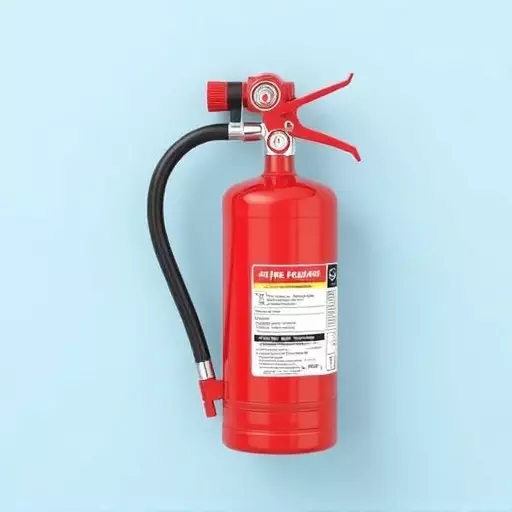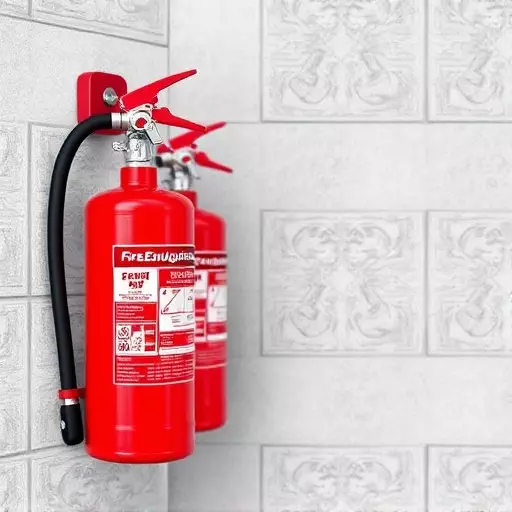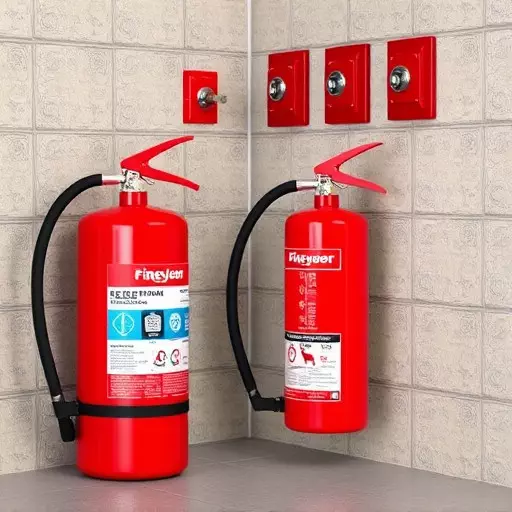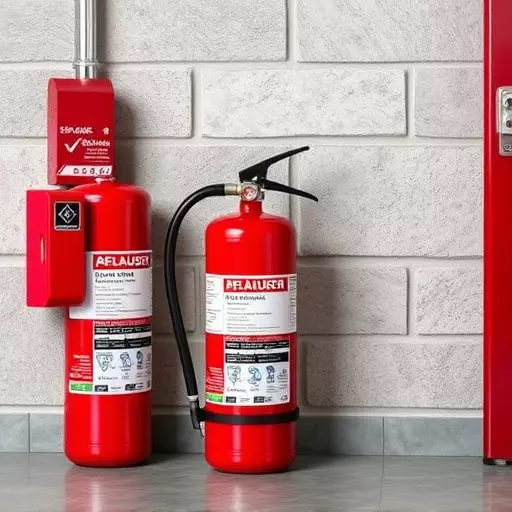Commercial fire safety requires strategic fire extinguisher installation tailored to property-specific challenges like size, layout, and occupancy. Professional services prioritize local regulations, building codes, and industry risks for optimal placement, accessibility, and occupant training. Choosing the right extinguisher types (e.g., dry chemical, water spray, CO2) based on fire classes (A, B, C, D) is crucial. Installation involves assessing accessibility, hazards, and fire types, followed by secure attachment, plumbing connection, and staff training. Regular maintenance and inspections by certified services are vital for optimal functionality, safety, and compliance in both residential and commercial settings. Reputable providers specializing in commercial installations ensure adherence to industry standards through risk assessments, local regulations, and tailored recommendations.
Fire safety is paramount in commercial spaces, and proper fire extinguisher installation is a critical component. This comprehensive guide explores the essentials of commercial fire extinguisher installation, from understanding local regulations to selecting the right equipment for your property. We’ll walk you through the installation process, best practices for maintenance, legal compliance considerations, and tips for choosing expert fire extinguisher installation services. Ensure your business is prepared with this essential knowledge.
- Understanding Commercial Fire Extinguisher Requirements
- Types of Fire Extinguishers for Commercial Spaces
- The Installation Process: Step-by-Step Guide
- Best Practices for Regular Maintenance and Inspection
- Legal Compliance and Safety Standards
- Choosing the Right Fire Extinguisher Installation Service
Understanding Commercial Fire Extinguisher Requirements

In the realm of commercial spaces, fire safety is paramount and requires a strategic approach to protection. Commercial fire extinguisher installation goes beyond simple compliance; it’s a vital investment in safeguarding lives and assets. Unlike residential settings, commercial properties often present unique challenges due to their size, layout, and occupancy. Therefore, understanding and adhering to specific fire extinguisher requirements is essential for every business owner or manager.
Fire extinguisher installation services tailored for commercial spaces consider factors like local regulations, building codes, and the unique risks associated with various industries. For instance, a high-rise office building might necessitate different placement and types of extinguishers compared to a retail store or warehouse. Professional installers ensure proper spacing, accessibility, and training for occupants, making it crucial for businesses to engage expert services rather than relying solely on over-the-counter solutions.
Types of Fire Extinguishers for Commercial Spaces

In commercial spaces, the selection of fire extinguishers is crucial and depends on various factors such as the nature of the business, size of the premises, and potential fire hazards present. Different types of fire extinguishers are designed to combat specific classes of fires—class A (solid combustibles), class B (flammable liquids), class C (electrical fires), and class D (combustible metals). For instance, dry chemical fire extinguishers are commonly used in commercial settings due to their effectiveness against class A and B fires. Water spray extinguishers are suitable for areas with high risk of electrical fires (class C) while CO2 extinguishers are ideal for enclosed spaces like data centers or kitchens, as they suppress fires without leaving any residual water damage.
Residential and commercial fire extinguisher installation services often recommend a combination of these extinguishers to ensure comprehensive protection. Proper placement is key; they should be easily accessible and in accordance with local regulations. Regular maintenance and inspections are also vital to guarantee their readiness in case of an emergency, making it essential for business owners to rely on professional fire extinguisher installation services for peace of mind.
The Installation Process: Step-by-Step Guide

The process of installing a commercial fire extinguisher is a critical task that requires precision and adherence to safety standards. It involves several steps to ensure effectiveness and compliance with regulations. First, assess the area where the extinguisher will be placed, considering factors like accessibility, proximity to potential hazards, and the type of fires that may occur. This evaluation guides the selection of the appropriate fire extinguisher model.
Once the perfect fit is chosen, the installation begins. It typically includes attaching the extinguisher securely to a wall or ceiling, ensuring it’s firmly in place. Next, connect the extinguisher to its source of water supply, following the recommended plumbing guidelines for commercial settings. A pressure test might be conducted to verify the system’s integrity, guaranteeing that the extinguisher is ready for immediate use in case of an emergency. Proper training is essential for staff to understand how to operate and maintain these critical safety devices.
Best Practices for Regular Maintenance and Inspection

Regular maintenance and inspection are vital for ensuring the optimal functionality of fire extinguishers in both residential and commercial settings. Property owners and managers should schedule routine checks by professional fire extinguisher installation services to verify the devices’ readiness. These inspections involve examining the extinguisher’s exterior for any signs of damage, checking the pressure gauge, and confirming that the pin is intact and the lock is not disabled. It’s equally important to test the device’s operation, ensuring it discharges properly when activated.
During maintenance, consider factors like environmental conditions, frequency of use, and local regulations. Commercial fire extinguisher installation services often recommend biannual or annual inspections depending on these variables. Regular upkeep not only guarantees the safety of occupants but also helps in identifying potential issues early on, allowing for swift resolution before they escalate.
Legal Compliance and Safety Standards

Commercial and residential fire extinguisher installations are not just about meeting legal requirements; they are paramount for ensuring safety in any building. In many jurisdictions, fire extinguisher installation services are mandated by law to protect both property and lives. These regulations aim to create a robust safety standard that all businesses and homeowners must adhere to. Failure to comply can result in severe penalties and potential legal consequences.
When it comes to commercial spaces, the need for proper fire extinguisher installations is even more critical due to the higher risk of large-scale incidents. Professional fire extinguisher installation services are essential to ensure these systems meet specific safety standards tailored to each unique property. This includes correct placement, regular maintenance, and adherence to local building codes, all designed to facilitate quick and effective response in case of a fire emergency.
Choosing the Right Fire Extinguisher Installation Service

When selecting a fire extinguisher installation service, it’s paramount to choose a reputable and experienced provider for both residential and commercial properties. Look for companies specializing in commercial fire extinguisher installation, as they possess the expertise and knowledge required to meet stringent industry standards. These professionals will assess your premises, recommend suitable fire extinguishers based on risk assessments, and ensure compliance with local regulations.
Consider their portfolio, client testimonials, and certifications to gauge their reliability. Reliable fire extinguisher installation services offer ongoing maintenance and prompt service in case of emergencies, providing peace of mind for property owners. Additionally, they should be adept at installing different types of extinguishers, from dry chemical to water-based systems, to cater to diverse operational needs.


